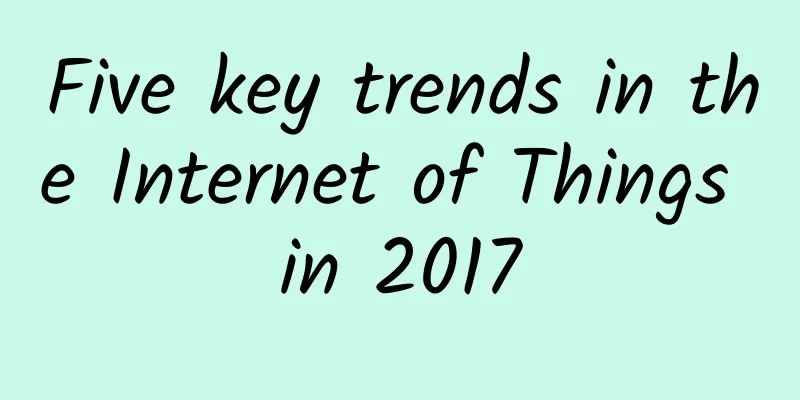Five key trends in the Internet of Things in 2017

|
The Internet of Things (IoT) technology has quietly changed human life, forcing people to pay attention to its development trends. Ovum, a research unit focusing on the development of IoT communications, announced the five key trends in the development of IoT in 2017 at the 2017 Global Internet of Things Conference (Internet of Things World 2017). ***, Low Power, Wide Area (LPWA) networks will become mainstream, and LPWA technology will gradually be valued, especially the two transmission protocols NB-IOT (Narrowband IoT) and LTE-M, which will be widely used in smart cities, smart meters and other fields to provide low-cost, low-bandwidth and low-power data transmission services. Second, in order to meet the diverse needs of the Internet of Things, although large telecommunications companies have market and technological advantages, they are still unable to meet various application needs. Therefore, more application service providers will emerge in the industry to provide professional services in specific fields. Third, information security will become the primary issue of the Internet of Things. With the development and widespread application of the Internet of Things, the level of information security and the breadth of its protection will become the primary consideration for enterprises.
Fourth, Big Data and machine learning will open up new business opportunities for the Internet of Things. IoT data analysis will shift to the "edge", with terminal devices collecting and compiling data nearby. At the same time, streaming data analysis tools will become more important, and more machine-learning engines and artificial intelligence (AI) applications will appear in IoT applications. Fifth, the IoT as a Service business model will continue to grow. IoT emphasizes application. In order to facilitate users to use it quickly and reduce the cost of use, the business model of Platform as a Service (PaaS) and Software as a Service (SaaS) will become mainstream. |
<<: Seven common mistakes in open source projects
>>: Four perspectives to teach you to understand the Internet of Things
Recommend
The three major telecom operators are accelerating the construction of 5G networks and data centers
Seizing the opportunity of the country's &quo...
The Internet of Things in the Eyes of Operators: From 0 to 300,000, and then to the stars and the sea
In the forecast of the Internet of Things with tr...
ZJI: Hong Kong Kuiwan server monthly payment will be reduced by 300 yuan, and 999 yuan will be rewarded with a 1,100 yuan voucher
ZJI is the original well-known host in the WordPr...
5G future is here: the industrial ecosystem is moving towards synergy and win-win
With the network reconstruction of operators, NB-...
The three-layer switch you know works like this
Why do we say that the Layer 3 forwarding perform...
A complete guide to worry-free WiFi coverage during the Dragon Boat Festival holiday
The Dragon Boat Festival holiday has begun. Durin...
Six IT trends to watch in 2023
Businesses and society at large continue to turn ...
Will broadband market operators monopolize the market? Private capital faces difficulties
On November 26, 2014, the Ministry of Industry an...
Research on the market development strategy of operators under the background of digital transformation
At present, a new round of world scientific and t...
In the 5G era, how are operators doing in the government and enterprise market?
4G has just entered a stable development period, ...
Analysis of the reasons for the slowdown of 4G network speed
Although 5G has only been implemented for a year,...
How to choose IoT communication technology
Communication technology, as a basic technology, ...
The key role of optical transceivers in passive optical network technology
Passive Optical Network (PON) technology has beco...
The Secret History of IPv6
As we all know, IPv6 is a new technology that is ...
Blockchain cross-domain security solution
1. Evolution of blockchain development Looking ba...
![[5.1] DogYun: 30% off on all dynamic clouds, 20% off on classic clouds, 10 yuan free for every 100 yuan recharge, 100 yuan off for independent servers per month](/upload/images/67cabee4e8514.webp)








